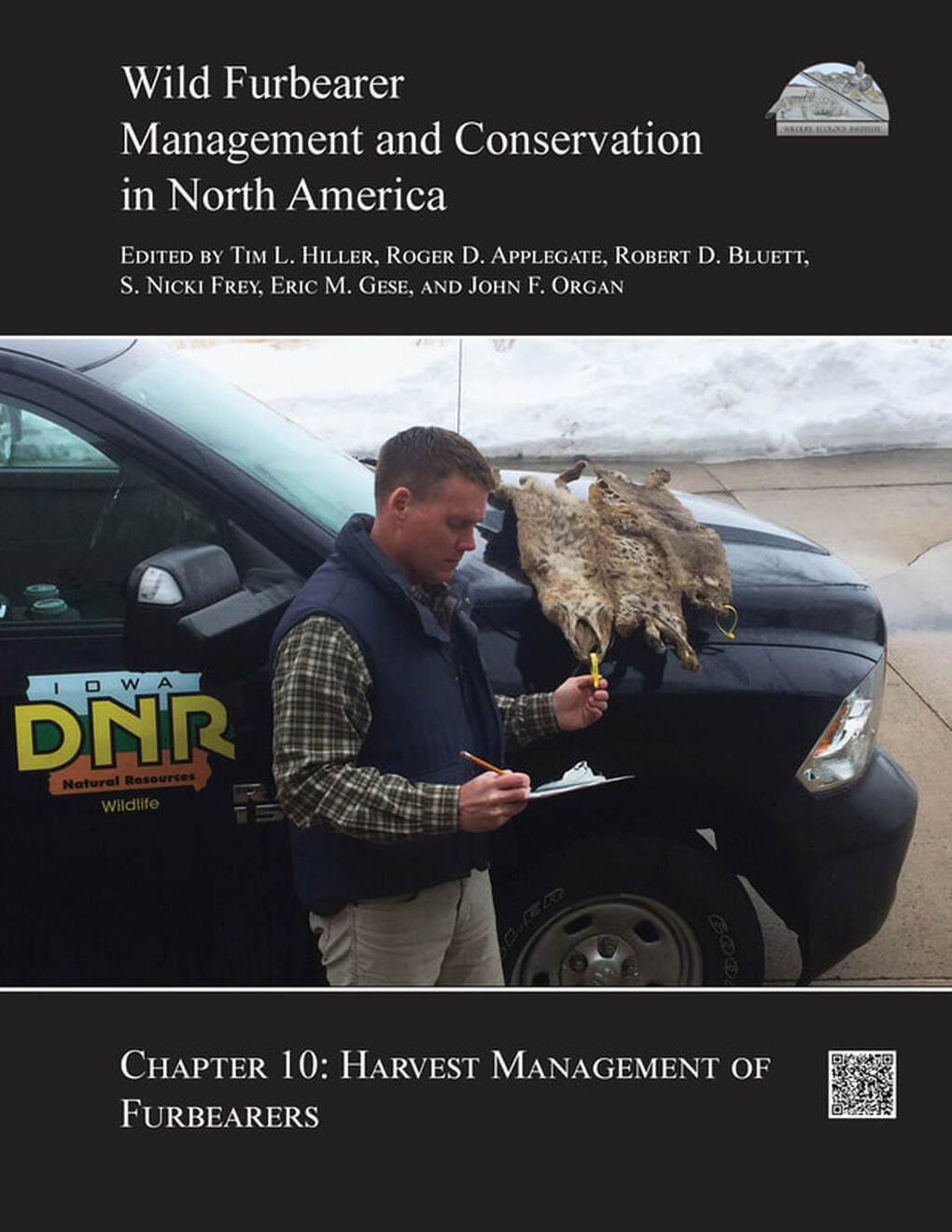For information about this book, including the Table of Contents, click here.
Published 22 November 2023
© 2023 Wildlife Ecology Institute
https://doi.org/10.59438/BZWM9451
© 2023 Wildlife Ecology Institute
https://doi.org/10.59438/BZWM9451
INTRODUCTION
Harvest management is a cornerstone of wildlife management in North America, particularly for state, provincial, and tribal fish and wildlife management agencies. Yet, there seems to be a paucity of comprehensive works dedicated to practical guidance decisions for harvest management. The management of furbearers is no exception. To be most effective in dynamic systems, harvest management should be considered a learning process because decisions must be made and revised as conditions change. The complexity of these ecological systems, coupled with uncertainty in outcomes, may result in conservative decisions related to harvest. The challenges of collecting data for a diverse set of species may make harvest management of furbearers especially prone to conservative decisions.
Harvest management is a cornerstone of wildlife management in North America, particularly for state, provincial, and tribal fish and wildlife management agencies. Yet, there seems to be a paucity of comprehensive works dedicated to practical guidance decisions for harvest management. The management of furbearers is no exception. To be most effective in dynamic systems, harvest management should be considered a learning process because decisions must be made and revised as conditions change. The complexity of these ecological systems, coupled with uncertainty in outcomes, may result in conservative decisions related to harvest. The challenges of collecting data for a diverse set of species may make harvest management of furbearers especially prone to conservative decisions.
Citation:
Hiller, T. L., R. D. Applegate, and M. S. O’Brien. 2023. Harvest Management of furbearers. Pages 10.1–10.13 in T. L. Hiller, R. D. Applegate, R. D. Bluett, S. N. Frey, E. M. Gese, and J. F. Organ, editors. Wild furbearer management and conservation in North America. Wildlife Ecology Institute, Helena, Montana, USA. https://doi.org/10.59438/YGDU8654
Citation:
Hiller, T. L., R. D. Applegate, and M. S. O’Brien. 2023. Harvest Management of furbearers. Pages 10.1–10.13 in T. L. Hiller, R. D. Applegate, R. D. Bluett, S. N. Frey, E. M. Gese, and J. F. Organ, editors. Wild furbearer management and conservation in North America. Wildlife Ecology Institute, Helena, Montana, USA. https://doi.org/10.59438/YGDU8654
Copyright 2024 Wildlife Ecology Institute



